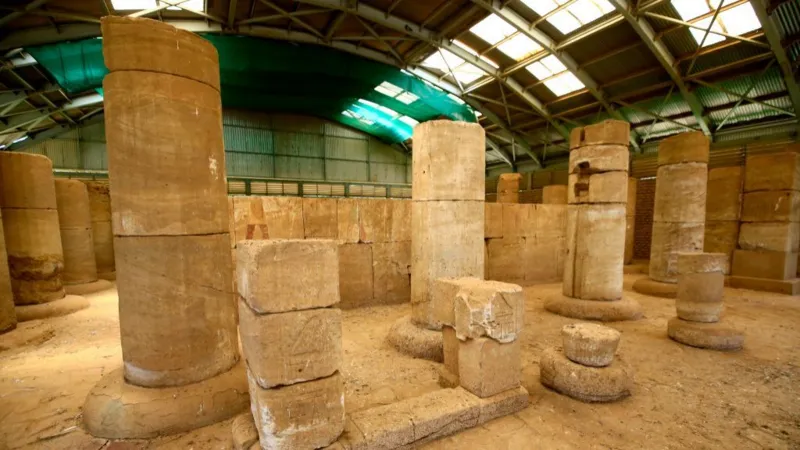The rich cultural tapestry of Sudan, home to some of the oldest civilizations in human history, faces a profound threat due to ongoing conflicts. The wars that have marred this nation over decades have not only claimed lives but have also severely damaged its cultural heritage, leaving museums—once sanctuaries of art and history—devastated. As a result, priceless artifacts that once narrated the stories of ancient Nubia and the kingdoms of Kush now lie in ruins, overshadowed by the grim realities of modern warfare.
Cultural Significance of Sudan’s Artifacts
Sudan’s museums house a treasure trove of artifacts, including ancient sculptures, pottery, hieroglyphics, and relics from past empires. The National Museum of Sudan in Khartoum, for example, houses approximately 20,000 items spanning thousands of years. However, the turmoil that has enveloped the country, particularly in the Darfur region and the conflict surrounding South Sudan’s independence in 2011, has rendered many of these institutions vulnerable. The loss isn’t merely material; it represents a loss of identity and historical continuity for a nation rich in history.
The Destruction of Museums
Reports have documented the destruction of key sites and museums across the country. In 2013, unrest and conflict led to the looting of several institutions. Thieves took advantage of the chaos, pilfering valuable artifacts that were meant to be preserved for future generations. In some cases, entire collections were lost, taking with them centuries of history. The Sudanese Ministry of Tourism and Wildlife reported that around 70% of archaeological sites were looted or otherwise damaged during periods of violence.
While the loss of these artifacts represents a physical blow to Sudan’s cultural heritage, it also has significant implications for education and nationalism. Museums are crucial for fostering a sense of cultural pride and continuity, and their destruction risks eroding that foundation.
Artworks Turned Into War Relics
The irony is not lost on observers that while the conflict has resulted in the destruction of Sudan’s cultural masterpieces, it has simultaneously turned other aspects of the war into unintentional exhibits. The scenes of war alongside the remnants of bullets and artillery now mingle with artifacts from a time of peace, creating a surreal landscape where beauty and brutality coexist. Soldiers and civilians alike often traverse these haunted sites, where the echoes of history clash with the dissonance of conflict.
International Response and Preservation Efforts
Recognizing the urgent need to safeguard Sudan’s cultural heritage, international organizations have begun to mobilize resources for preservation. UNESCO has called attention to the plight of Sudanese heritage, advocating for increased protection of archaeological sites during armed conflict. Efforts to document and restore damaged artifacts are ongoing, but these initiatives require funding, expertise, and political will—resources that are often scarce.
Local activists and scholars also play a crucial role in these preservation efforts, raising awareness and encouraging community involvement. They understand that preserving their heritage is not just about protecting history, but also about empowering Sudan’s future.
A Call to Action
As war continues to plague Sudan, the international community must act decisively to safeguard its rich cultural heritage. The loss of artifacts isn’t just a national tragedy—it is a global loss that denies future generations access to vital chapters of human history. As Sudan navigates its path toward peace, protecting its museums and the stories they tell must be seen as an integral part of that journey. Only then can Sudan begin to heal, restoring its identity along with its heritage amidst the scars of war.
Email Us on editorial@nnafrica.com













